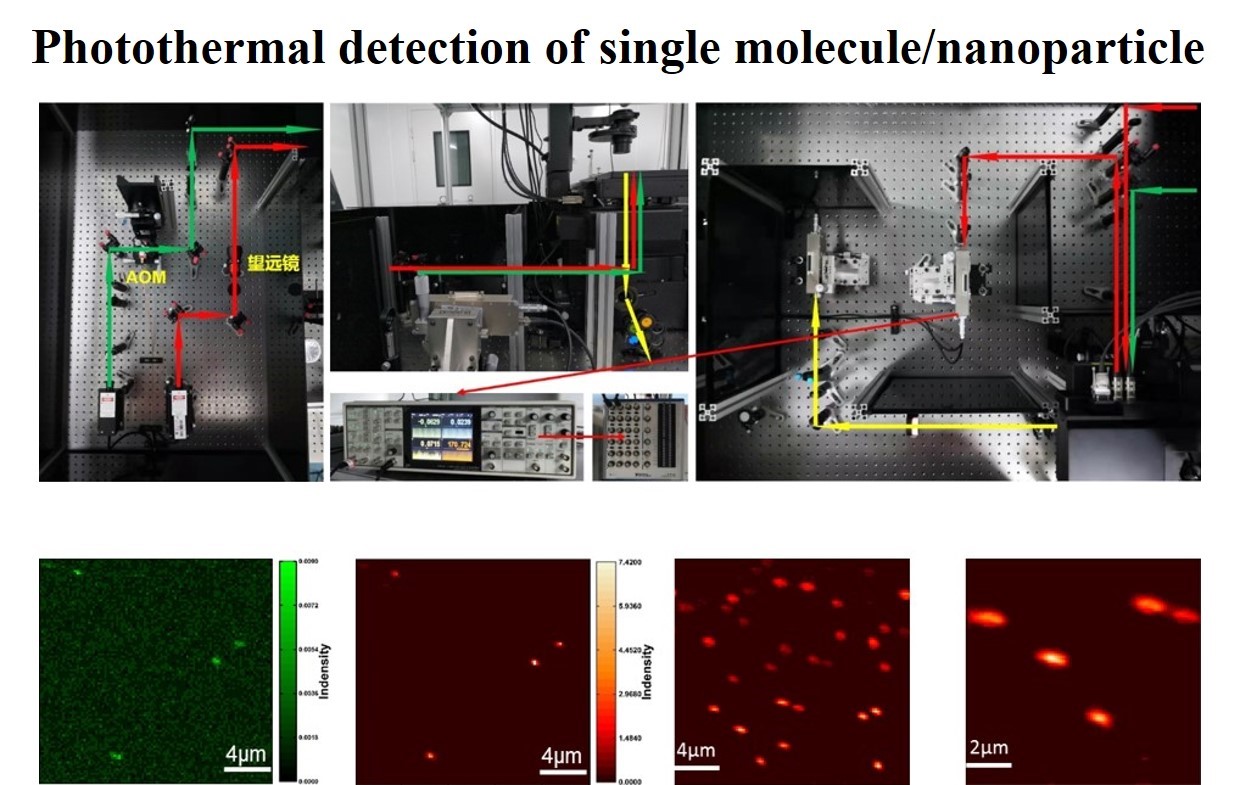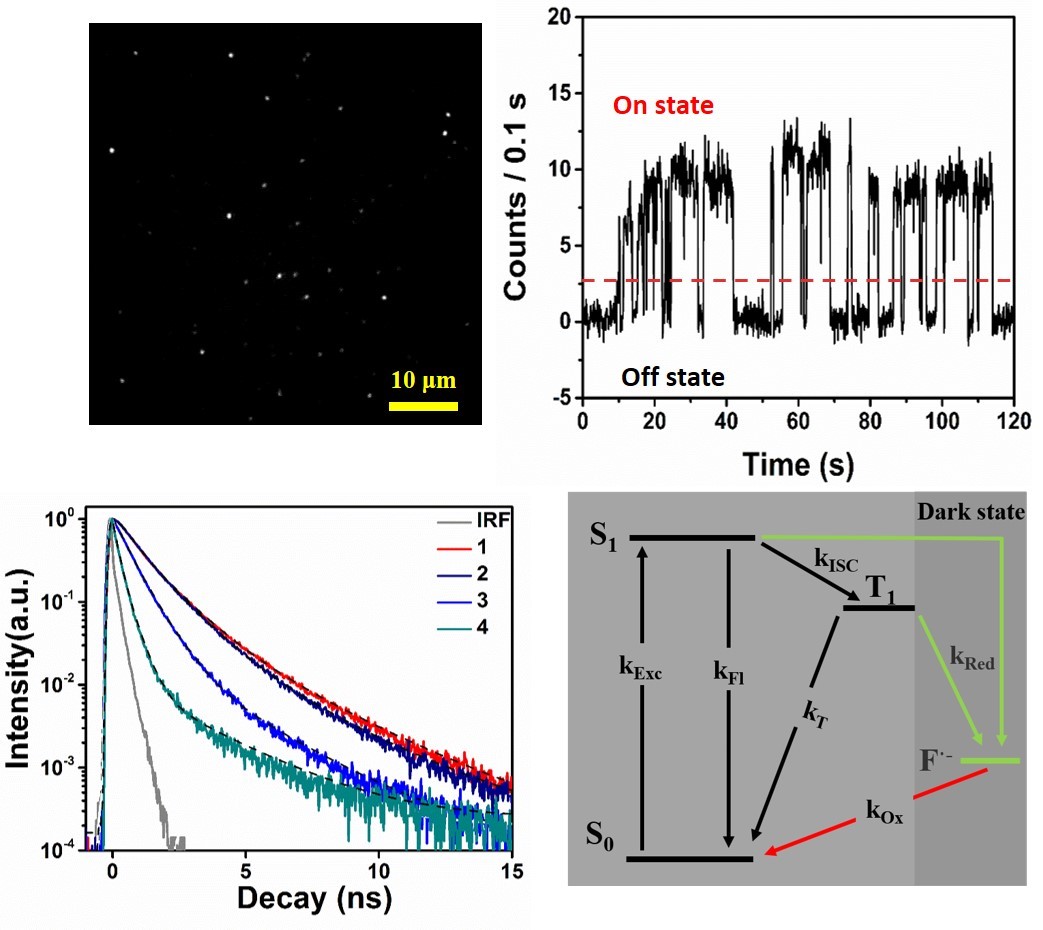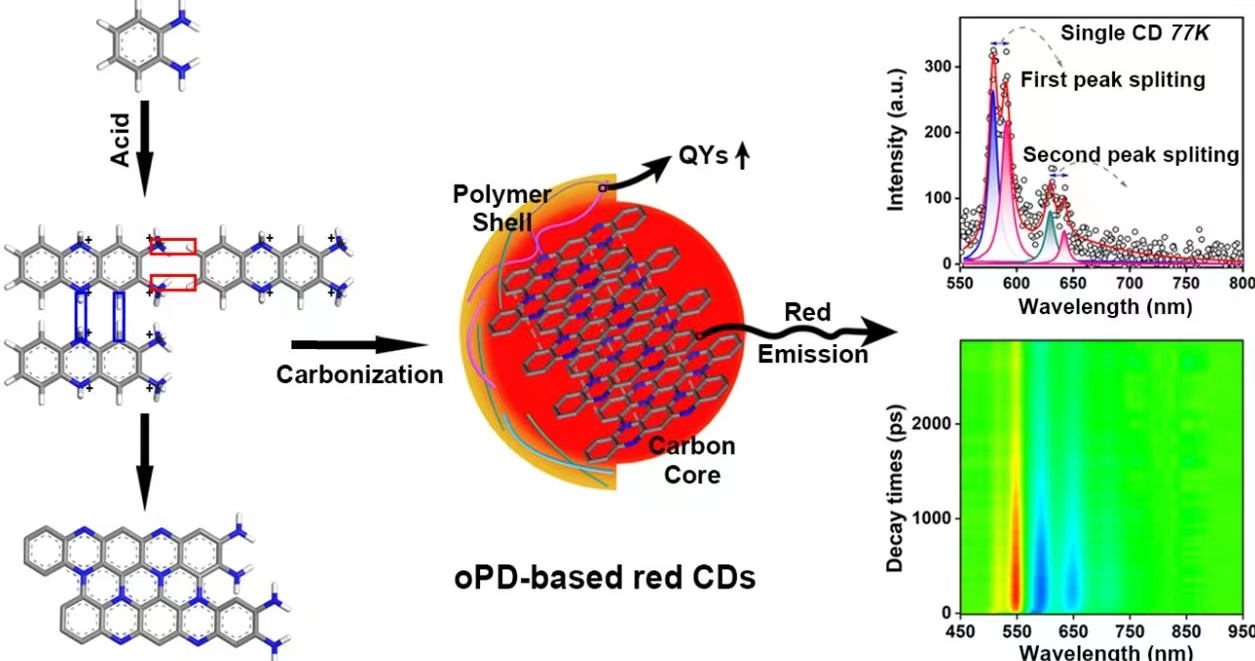Our research group is mainly committed to the research of ultrafast spectroscopy and single molecule spectroscopy, and has developed and established a variety of new single molecule spectroscopy methods, and successfully applied to the photophysical mechanism of a variety of different systems, including important small molecules, conjugated polymers, natural photosynthetic tissues and new photovoltaic materials. The current specific direction of the laboratory is: (1) Development of Single Molecule Spectroscopy Techniques (2) Study of Single Molecule Photophysical Mechanisms and Internal Energy Transfer Processes; (3)Study on photophysical mechanism of novel photoelectric materials (4) Development of single molecule devices |
The biggest drawback of single molecule fluorescence technology is that it can only detect the substances emitting fluorescence, and the nature is more weak fluorescence or non-fluorescent substances, in order to achieve the detection of such substances, single molecule photothermal technology came into being. In particular, our research group combined fluorescence, photothermal and scattering channels to achieve simultaneous detection of the three, which is conducive to a deeper and broader understanding of the interaction between light and matter. |
 |
The unique zero-dimensional quantum limiting action, size dependence and surface effect of quantum dots show the optical properties of wide spectral coverage area and high quantum yield. This research group mainly focuses on the discovery of new properties of new single-particle quantum dots and the study of photophysical mechanisms, and the development of highly sensitive single quantum dot devices.
|
 |
New photoelectric materials such as perovskite, carbon materials and quantum dots have shown excellent performance and good prospects in photovoltaic and light-emitting devices. In order to further understand the photophysical mechanism of these materials under the action of light excitation and electric field, this topic uses spectroscopy to characterize the carrier transport behavior, ion migration process and the interaction between materials and light, electricity and external environment. It provides an effective strategy for the performance improvement and application development of new photoelectric materials. |
 |
Individual molecules are extremely sensitive to the surrounding environment, such as electric field, temperature, pressure and even the disturbance of chemical groups can cause molecular spectral lines and life changes. Therefore, according to the sensitive characteristics of single molecule, the nano-detection device of weak vibration signal at low temperature and room temperature is developed by using single molecule as a probe, and the localization detection of weak vibration signal with high sensitivity and high spatial resolution is realized at the same time. |
 |


